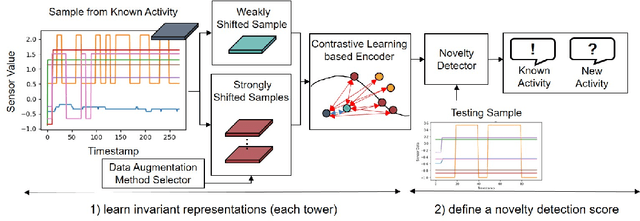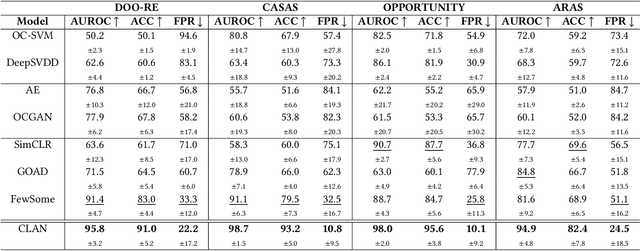CLAN: A Contrastive Learning based Novelty Detection Framework for Human Activity Recognition
Paper and Code
Jan 17, 2024



In ambient assisted living, human activity recognition from time series sensor data mainly focuses on predefined activities, often overlooking new activity patterns. We propose CLAN, a two-tower contrastive learning-based novelty detection framework with diverse types of negative pairs for human activity recognition. It is tailored to challenges with human activity characteristics, including the significance of temporal and frequency features, complex activity dynamics, shared features across activities, and sensor modality variations. The framework aims to construct invariant representations of known activity robust to the challenges. To generate suitable negative pairs, it selects data augmentation methods according to the temporal and frequency characteristics of each dataset. It derives the key representations against meaningless dynamics by contrastive and classification losses-based representation learning and score function-based novelty detection that accommodate dynamic numbers of the different types of augmented samples. The proposed two-tower model extracts the representations in terms of time and frequency, mutually enhancing expressiveness for distinguishing between new and known activities, even when they share common features. Experiments on four real-world human activity datasets show that CLAN surpasses the best performance of existing novelty detection methods, improving by 8.3%, 13.7%, and 53.3% in AUROC, balanced accuracy, and FPR@TPR0.95 metrics respectively.
 Add to Chrome
Add to Chrome Add to Firefox
Add to Firefox Add to Edge
Add to Edge